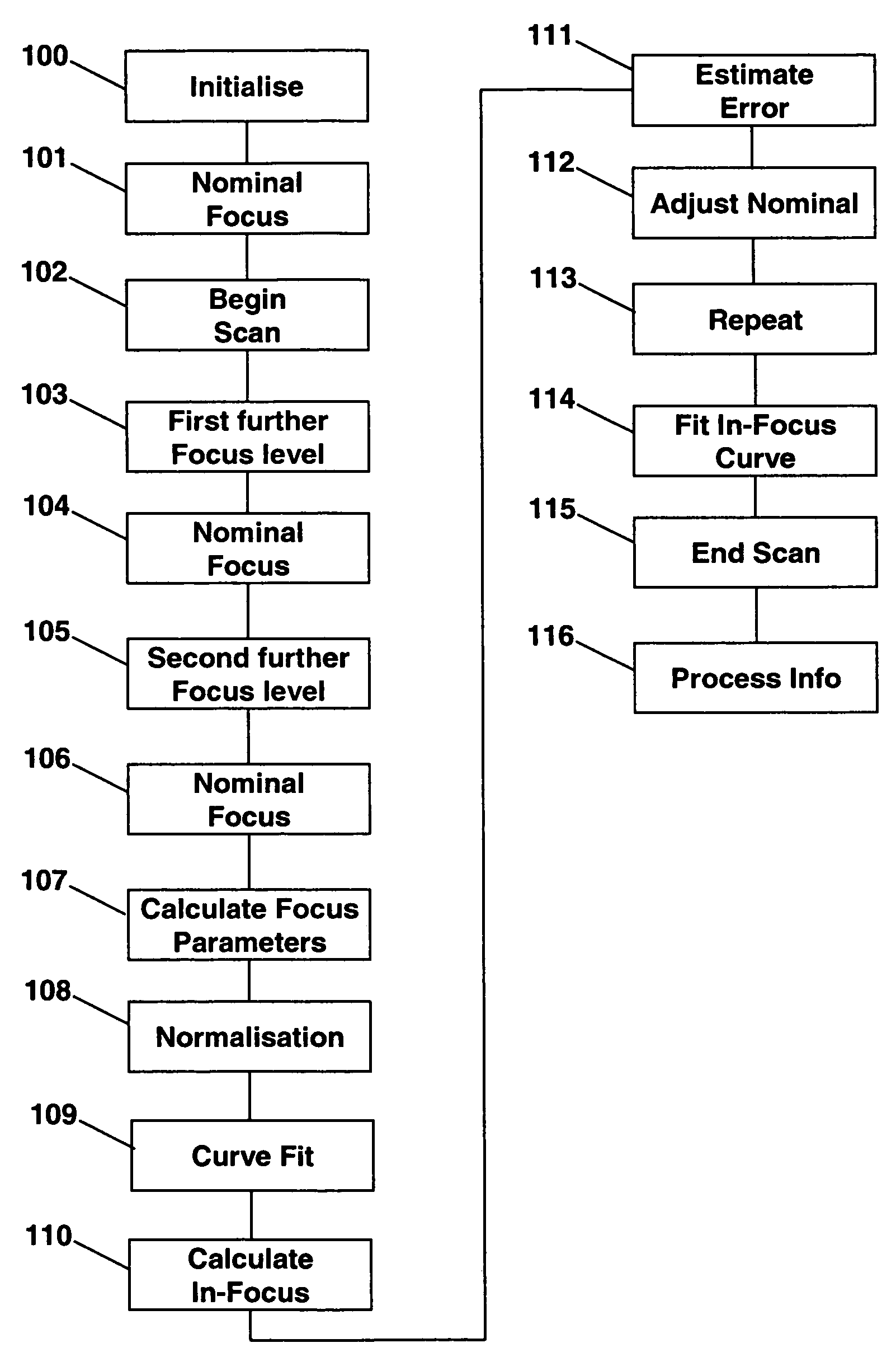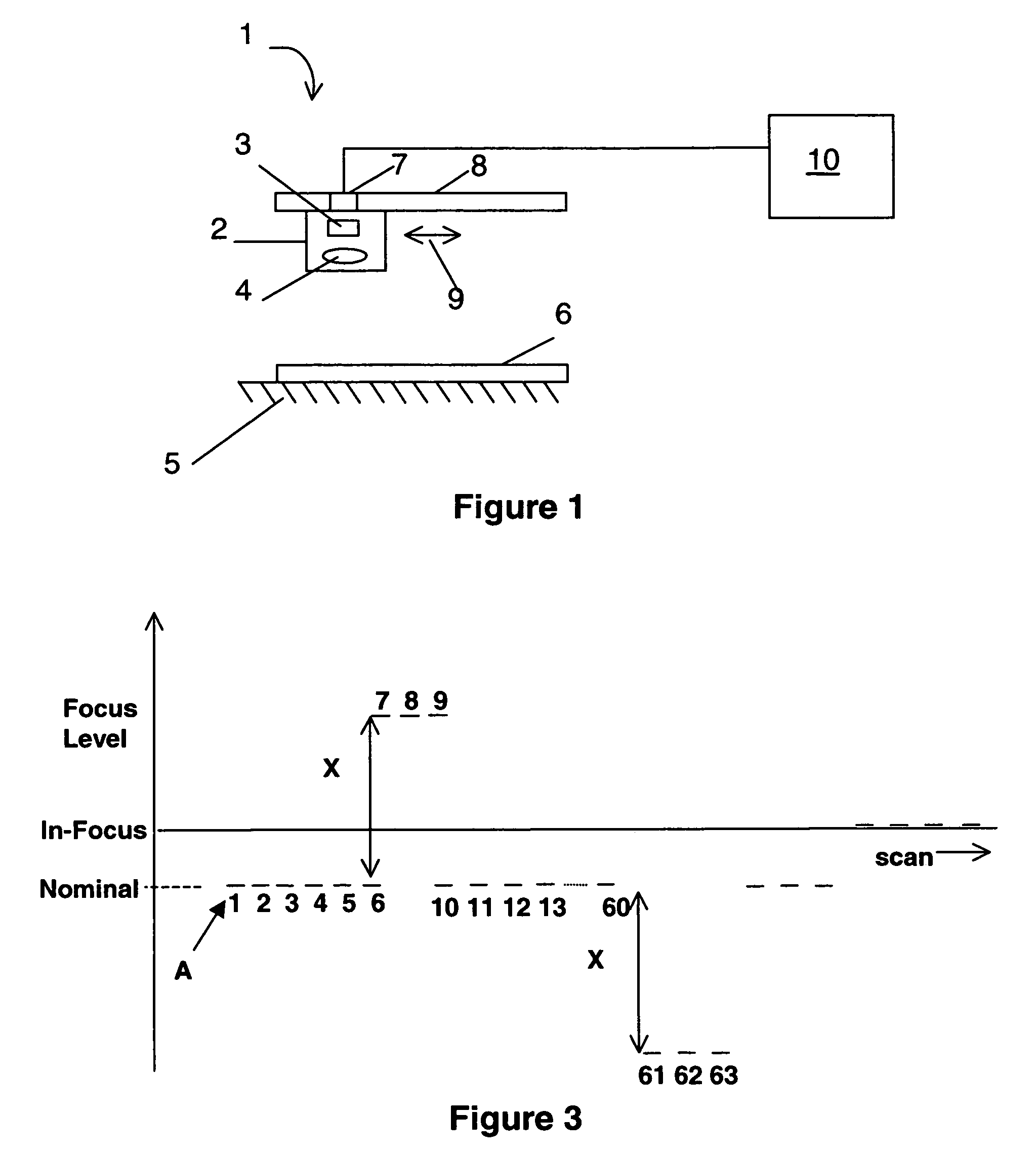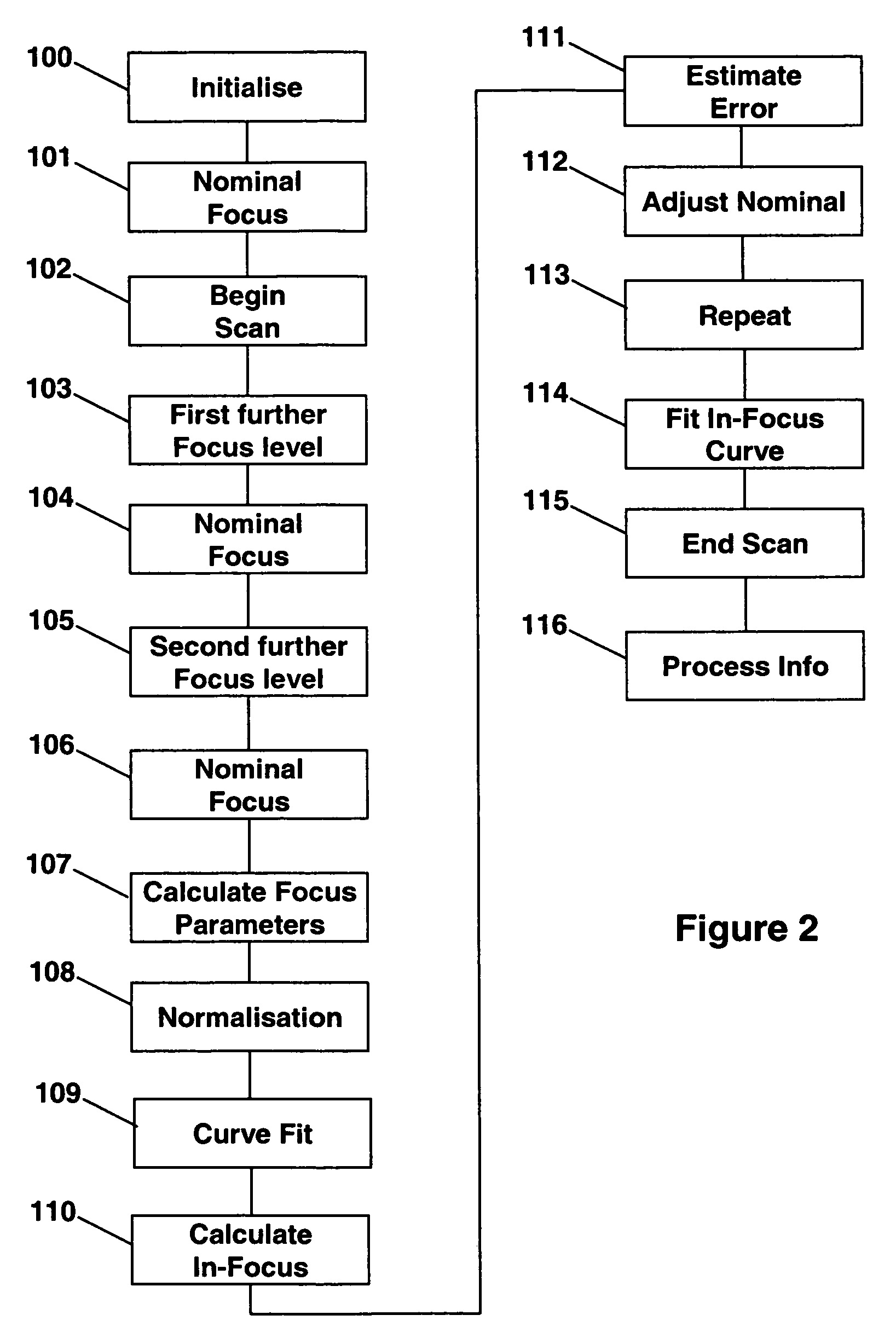Method and apparatus for estimating an in-focus position
a technology of in-focus position and apparatus, which is applied in the field of method of estimating in-focus position of targets, can solve the problems of reducing the productivity of apparatuses, requiring rapid changes in focus that require many points to be measured, so as to improve the quality of image information for focus levels
- Summary
- Abstract
- Description
- Claims
- Application Information
AI Technical Summary
Benefits of technology
Problems solved by technology
Method used
Image
Examples
Embodiment Construction
[0032]An example image scanning apparatus is shown generally at 1 in FIG. 1. This comprises a scan head 2 comprising a photo-detector array 3 and an adjustable focus system 4. A platen 5 is provided upon which is positioned a target to be scanned 6. A drive mechanism 7 attaches the scan head to a track 8 such that the scan head can be moved with respect to the target 6 as indicated by the arrows 9. The image scanning apparatus is controlled using a controller 10 which may comprise programmable logic, a dedicated processor or a computer system.
[0033]The operation of the image scanning apparatus 1 in performing a method according to the invention will now be described with reference to the flow diagram of FIG. 2. The method begins at step 100 where various setup and initialisation procedures are performed, including positioning the target 6 upon the platen 5. The controller 10 moves the scan head 2 by means of the drive mechanism 7 to a start position. This step may also optionally in...
PUM
 Login to View More
Login to View More Abstract
Description
Claims
Application Information
 Login to View More
Login to View More - R&D
- Intellectual Property
- Life Sciences
- Materials
- Tech Scout
- Unparalleled Data Quality
- Higher Quality Content
- 60% Fewer Hallucinations
Browse by: Latest US Patents, China's latest patents, Technical Efficacy Thesaurus, Application Domain, Technology Topic, Popular Technical Reports.
© 2025 PatSnap. All rights reserved.Legal|Privacy policy|Modern Slavery Act Transparency Statement|Sitemap|About US| Contact US: help@patsnap.com



